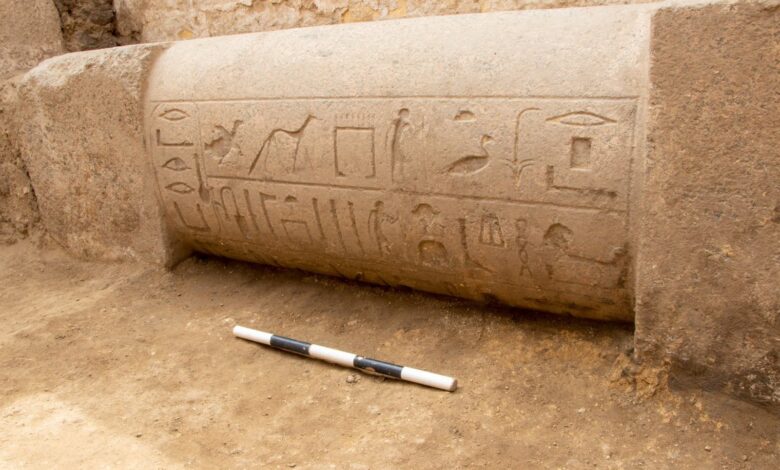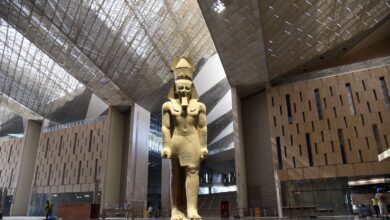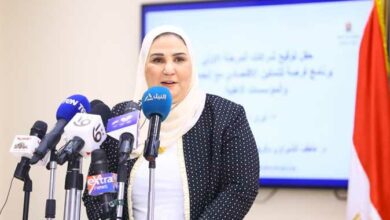
A joint Egyptian mission, led by the Supreme Council of Antiquities and Zahi Hawass Foundation for Antiquities and Heritage, uncovered the tomb of Prince Userefre, the son of King Userkaf, the first king of the Fifth Dynasty of the Old Kingdom.
This discovery occurred during the mission’s work in the Saqqara archaeological site, alongside numerous important archaeological finds from this era and later periods.
Minister of Tourism and Antiquities Sherif Fathy hailed the discovery, made by a purely Egyptian archaeological mission, for unveiling new secrets from this important historical era of ancient Egyptian civilization.
The Secretary-General of the Supreme Council of Antiquities Mohamed Ismail Khaled explained that this is the first time a false door made of pink granite of this magnitude has been found.
Its height is four and a half meters and its width is 1.15 meters, he noted. It is decorated with hieroglyphic inscriptions detailing the prince’s name and titles, including “Hereditary Prince,” “Governor of the Buto and Nekhbet Regions,” “Royal Scribe,” “Vizier,” “Judge,” and “Chanting Priest.”
Archaeologist and former Minister of Antiquities Zahi Hawass indicated that the mission also found, for the first time, a statue of King Djoser, his wife, and ten daughters inside the tomb.
Preliminary studies have shown that these statues were located in a room next to King Djoser’s Step Pyramid and were moved to the tomb of Prince Userefre during the Late Period.
The mission will continue its work to determine the reason behind moving these statues from their original location to here.
In addition, a red granite offering table measuring 92.5 cm in diameter was found, bearing an inscription recording the offering lists.
Inside one of the tomb’s chambers, a massive black granite statue, 1.17 meters tall, of a standing man was uncovered, with hieroglyphic inscriptions on his chest bearing the name and titles of its owner.
The owner of this statue appears to date back to the 26th Dynasty, indicating that the tomb may have been reused in the Late Period.
In front of the eastern facade, another entrance to the tomb was found, bearing inscriptions of the tomb owner, his titles, and the cartouche of King Neferirkare.
To the north of the lintel, a group of 13 pink granite statues seated on a high-backed seat – the first discovery of this kind in Saqqara.




